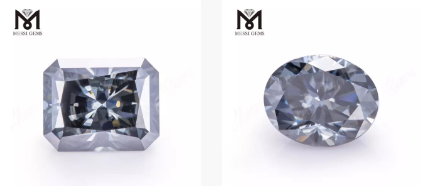A New Era: Understanding Man-Made Diamonds
Man-made diamonds, also known as lab-grown or synthetic diamonds, have revolutionized the gemstone industry. As their name suggests, these diamonds are created in laboratories through high-tech processes that replicate the conditions under which diamonds naturally form. Let's delve into the fascinating world of man-made diamonds, exploring their creation, benefits, and implications for the jewelry market.
The Creation Process of Man-Made Diamonds
The creation of man made diamonds is an intriguing process that emulates nature's method but in a more controlled environment. Two main processes are used: High Pressure High Temperature (HPHT) and Chemical Vapor Deposition (CVD). Both methods involve subjecting a carbon source to extreme heat and pressure, eventually yielding a diamond crystal. The produced gems possess the same physical, chemical, and optical properties as mined diamonds.
Man-Made Diamonds: A Sustainable Choice
One of the primary reasons for the growing popularity of man-made diamonds is their sustainability. Traditional diamond mining is a labor-intensive process with a significant environmental impact, including land degradation and water pollution. In contrast, creating diamonds in a lab is less detrimental to the environment, which aligns with the increasing consumer demand for sustainable and ethically sourced products.

Quality and Affordability: The Winning Combination
Man-made diamonds offer an enticing blend of quality and affordability. As they are physically and chemically identical to natural diamonds, their quality is undeniably high. They come in all shapes, sizes, and colors, just like their natural counterparts. However, man-made diamonds tend to be more affordable than mined diamonds due to lower production costs, making them an attractive option for a broader consumer base.
Man-Made Diamonds in the Jewelry Market
The impact of man-made diamonds on the jewelry market has been substantial. These diamonds have not only broadened the range of options available to consumers but have also stirred a shift in consumer preferences. More and more people are choosing man-made diamonds for engagement rings and other jewelry pieces, appreciating their quality, cost-effectiveness, and ethical appeal.
The Role of Certification in Man-Made Diamonds
As with natural diamonds, the quality of man-made diamonds is assessed based on the four Cs: Carat, Cut, Clarity, and Color. It is crucial for consumers to seek out man-made diamonds certified by reputable gemological labs, as this ensures the diamond's quality and authenticity.
The Future of Man-Made Diamonds
Looking ahead, the future of man-made diamonds appears bright. As technological advancements in diamond production continue and awareness of their benefits grows, it's likely that the demand for these sustainable, beautiful, and affordable gems will continue to rise.
In summary, man-made diamonds represent a significant development in the gemstone industry. Their rise mirrors a wider societal shift towards sustainable consumption and ethical sourcing. These diamonds offer consumers an opportunity to own a piece of timeless beauty that aligns with their values, without compromising on quality or aesthetics. As we continue to innovate and adopt responsible practices, man-made diamonds are set to shine brighter in the jewelry landscape.